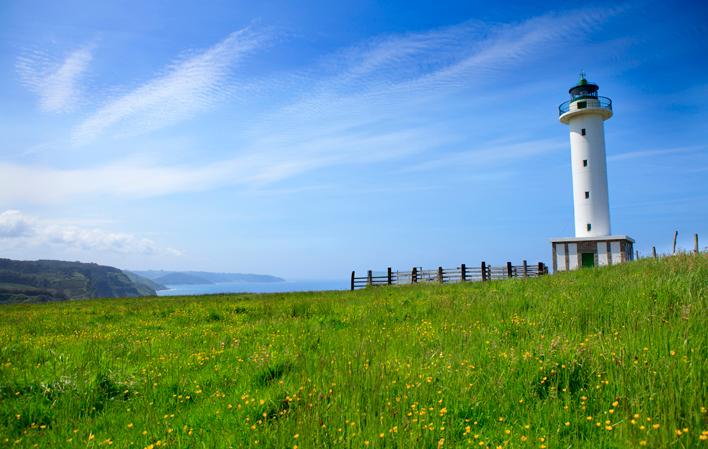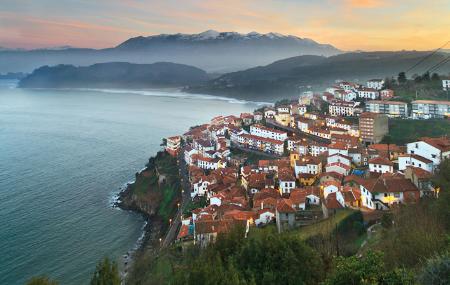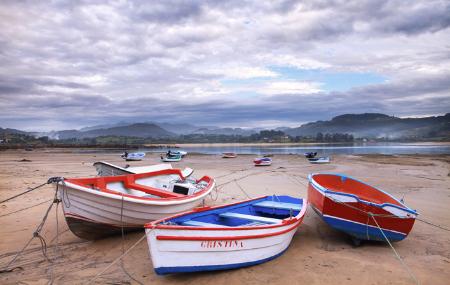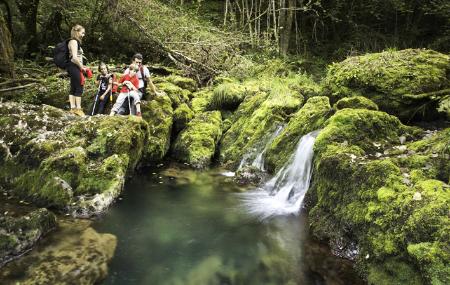
- Address Villaviciosa, Colunga Eastern Asturias
- Distance Distance: 65,3 kms
- Difficulty Difficulty: Short
- Cars Cars: 2 days
- Start point Start point: Villaviciosa
- Route type Route type: car
- Layout of the route Layout of the route: Download kml
All you have to do is let your imagination run wild and look where millions of years ago gigantic creatures used to put their paws.
All you have to do is let your imagination run wild and look where millions of years ago gigantic creatures stood with their feet. This simple action transports the traveller back in time and space to a coastal land that was then populated by dinosaurs. Villaviciosa and Colunga are two municipalities on the eastern coast known for their beaches, cider and heritage, but also for the ichnites of those prehistoric creatures.
Villaviciosa - Valdediós - Oles - Colunga - Llastres
Villaviciosa - El Puntal 35,7
Villaviciosa is a charming town that combines modern architecture with stately buildings. Travellers can begin their expedition in this town before setting off on the dinosaur trail. The route includes La Ballina park, the remains of the medieval wall, the house where José Caveda y Nava was born, the food market and the palace-house of Los Valdés. There are no dinosaur footprints in Valdediós either, but it is worth a trip to admire the ensemble formed by the Monastery of Santa María and the Church of San Salvador, popularly known as El Conventín, built in the 9th century and one of the best examples of Asturian Pre-Romanesque architecture.
In the afternoon the trip turns west from Villaviciosa, along the AS-256, to visit the first ichnite sites. The first stop is at the beach of Merón, which can be reached by the Argüeru turnoff, where the trail of a sauropod is preserved, made up of twenty footprints. On the way back to Villaviciosa, we can take the VV-5 road towards the famous fishing village of Tazones, where you can eat good fish and seafood, and then continue along the local road, which offers splendid views of Rodiles beach, the Villaviciosa estuary and El Puntal harbour.
Villaviciosa - Llastres 29,6
The second day will move eastwards. Colunga is the next capital that can be reached via the Autovía del Cantábrico motorway. It grows up around the church of San Cristóbal, the house of the Alonso Covián family, the market square and the chapel of Santa Ana. This is a good place to get your strength back before facing the dinosaurs. Once you have completed your walk through the streets, get into your car and take the AS-257 road towards Llastres to reach the Jurassic Museum, located on a hill with privileged views and a complete structure for learning about these animals that became extinct millions of years ago.
With the information fresh on the retina, the best destination is the beach of La Griega, which stretches just one kilometre from the museum and hides the first site to be discovered in Asturias, with the largest sauropod footprints in the world. The route begins at an explanatory sign located next to the Llibardón river and will take the traveller to the remains. The final stretch of the journey will take you to Llastres, a fishing port located in the middle of the dinosaur route.




